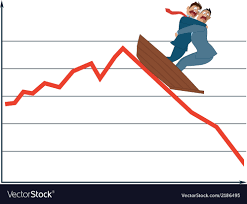
During the immense uncertainty in the markets currently, it’s more important than ever for investors to understand why having the right investment mix for your situation is critical in good times in the financial markets and during downturns. While you can’t control the ups and downs in the economy, a simple sensible approach helps to limit the impact on your portfolio.
When stock markets start plummeting, daily dose of bad news may sound like it will never end. It can spark anxiety, fuel uncertainty and trigger drastic decisions in even the most seasoned investors.
It’s important to keep perspective when markets get choppy. Here are some strategies to consider when volatility strikes.
- Don’t discard your Financial Plan
- Remain invested
- Stay diversified
- Risk Management
- Speak to your Financial Advisor
- Behavioural Finance
DON’T DISCARD YOUR FINANCIAL PLAN
A sudden drop in the market can have dramatically different implications for someone just starting their career compared to someone nearing retirement. What’s important is you understand your situation and your financial plan.
Connect with your advisor to discuss your investing time frame, goals and strategy to make sure you’re still on track.
REMAIN INVESTED
Short-term losses can trigger anxiety, but letting emotions drive your investment decisions may prove costly. One key to living with market volatility is focusing on long-term results rather than the daily bumps along the way. Staying the course can be difficult, but it can also create opportunities. Unfortunately, there aren’t any shortcuts for investors looking to build wealth that will last a lifetime.
STAY DIVERSIFIED
Diversification is a staple of investing. But as markets change, your portfolio may need to evolve. Times of volatility offer a great opportunity to re-evaluate and possibly rebalance your asset mix.
Of course, there’s no magic investment mix and what may work now can shift over time as economic conditions change. A ‘properly diversified’ portfolio can look very different depending on the circumstances for the investor at the time. For example, factors such as income needs, investment time horizon, and the availability of other assets such as real estate or a pension will all play a role in shaping a well-rounded asset allocation.
If you can predict the future, you don’t need to bother with diversification. But for the rest of us, maintaining a diversified portfolio across geographic regions, sectors, and asset classes is one of the best ways to invest for the long-term.
RISK MANAGEMENT
Don’t be passive in the face of volatile markets. After all, this is your money, and your future. Being comfortable with your plan and your portfolio are important, but so is knowing your tolerance for risk.
SPEAK TO YOUR FINANCIAL ADVISOR
If you’re concerned about market volatility, don’t hesitate to talk to your financial advisor. They can give you professional advice, go over your financial plan and help you determine any steps you may need to take. Call them or send an email to set up a meeting.
BEHAVIORAL FINANCE
Going to cash or trying to time the market by buying low and selling high can actually magnify losses. As evidenced in the last couple of months, the market can turn the tables. We’re wired to feel twice as bad about a loss as we feel good about a gain. Volatile markets can tempt an investor to forego future opportunities rather than face the possibility of a loss. And that may cause long-term goals to fall by the wayside.

